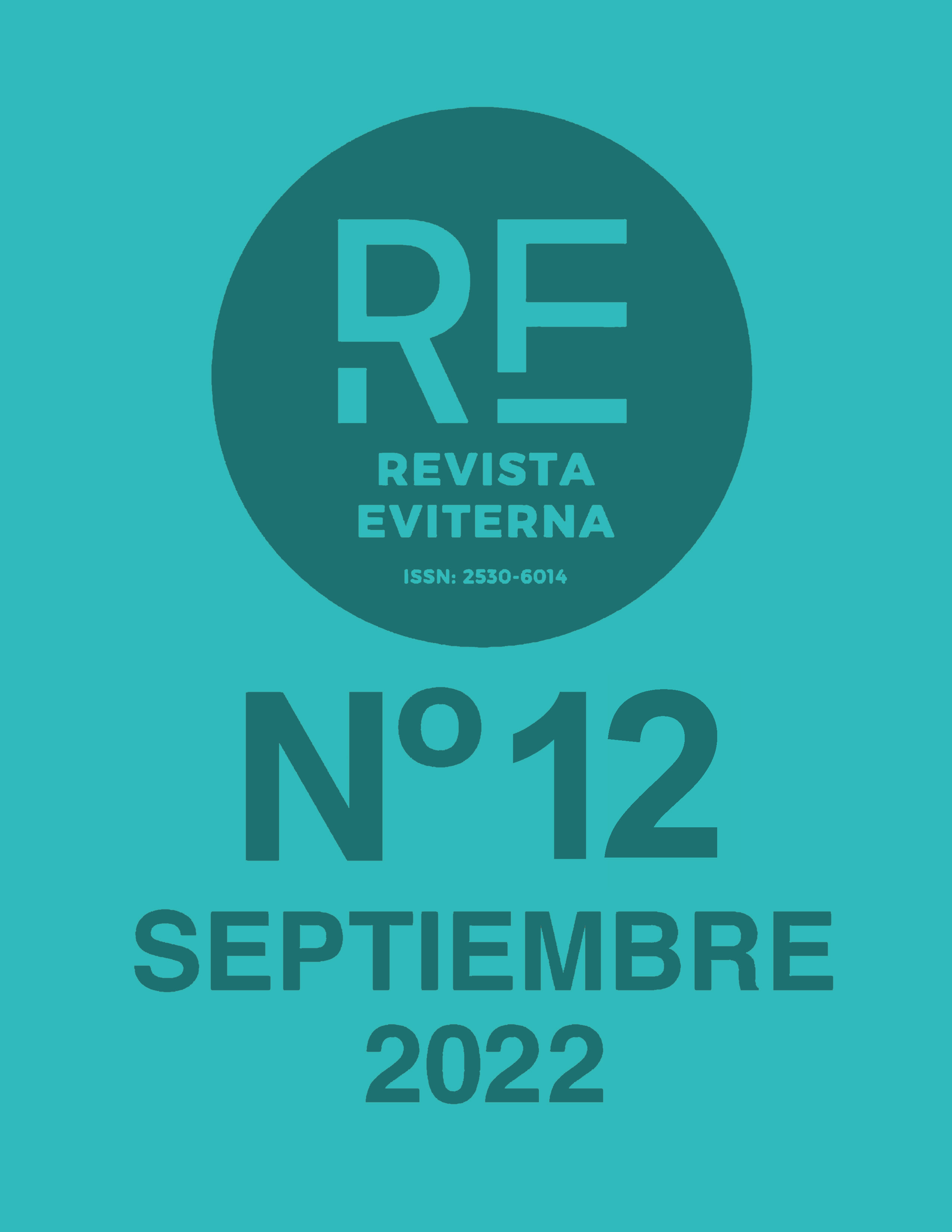University Teaching of Image Study
Workshops of visual Culture and Seminars of contemporary artistic visuality
DOI:
https://doi.org/10.24310/Eviternare.vi12.14586Keywords:
Artistic visuality, Image, seminars, Teaching innovation, WorkshopsAbstract
The text develops the proposal of educational innovation that concerns the «Workshops of Visual Culture» and the «Seminars of contemporary artistic visuality» that are presented as collaborative and complementary activities in the teaching of the subject of «Analysis and interpretation of the image» at the University of Valencia since the academic year 2009-2010. The experience of university teaching in a basic training module, focused on the study of the image has allowed us to implement these organizational modalities as optimal to achieve the skills that have been defined in the teaching/learning process of first year students of the degrees of History and History of Art at the University of Valencia. The purpose of the activities is aimed at introducing students, recently incorporated into the university environment, to the consideration of the image as a document of the History of Culture. The methodological parameters of both activities are developed within the theoretical framework of the iconographic-iconological method and its theoretical and practical application. Through these collaborative and complementary activities, students are provided with concrete examples of analysis and interpretation of the image, which come from different artistic contexts. Attendance to the workshops and seminars results in autonomous learning that provides good academic results since it was implemented as an organizational modality of university teaching in the degrees of History and History of Art.
Downloads
Metrics
Publication Facts
Reviewer profiles N/A
Author statements
Indexed in
-
—
- Academic society
- N/A
- Publisher
- Universidad de Málaga
References
Alfaro, I. J. (2006). Seminarios y talleres en Miguel Díaz, M. de (coord), Metodologías de enseñanza y aprendizaje para el desarrollo de competencias. Orientaciones para el profesorado universitario ante el espacio europeo de educación superior, Alianza Editoral, Madrid, pp. 53-81.
Annaud, J-J. (1986) El nombre de la rosa. Warner Home video, 2004.
Baixauli, R. (2021). “La inferioridad del bello sexo. Relaciones entre imagen, género y enfermedad en el entresiglos XIX-XX”, Atrio. Revista de Historia del arte, Nº 27, pp. 205-227.
Bonet Rosado, H y Vives-Ferrándiz Sánchez, J. (eds) (2017). L'enigma del Vas. Obra mestra de l'Art Ibèric. Diputació de València.
Doménech García, S. (2016). “Aristocracia alada, adalides del rey del cielo. Ángeles militares en la pintura barroca americana”. En: Potestas, nº. 9, pp. 197-232.
DOI: : http://dx.doi.org/10.6035/Potestas.2016.9.9
Eco, U. (2000). El nombre de la rosa. Barcelona, Debolsillo.
Elvira Barba, M.A. (2008). Arte y mito. Manual de Iconografía clásica. Madrid, Ed. Sílex.
García Mahíques, R. (2008). Iconografía e Iconología (vol. 1). La Historia del arte como Historia cultural, Madrid, Ed. Encuentro.
García Mahíques, R. (2009). Iconografía e Iconología (vol. 2). Cuestiones de método, Madrid, Ed. Encuentro.
García Mahíques, R y García Arranz (dir) (2019) Los tipos iconográficos de la tradición cristiana/5. Los demonios I. El diablo y la acción malèfica. Madrid, Encuentro.
Gombrich, E.H. (2002) Arte e ilusión. Estudio sobre la psicología de la representación pictórica, Madrid, Debate.
González Gea, E. (2021). “Profanación de los cuerpos femeninos. Consideraciones, usos y prácticas sobre el cuerpo femenino muerto en el arte y la cultura visual”, Eikón/Imago, Nº 10, pp. 93-105.
Miguel Díaz, M. de (2006). Métodos y modalidades de enseñanza en la educación superior, en Miguel Díaz, M. de (coord), Metodologías de enseñanza y aprendizaje para el desarrollo de competencias. Orientaciones para el profesorado universitario ante el espacio europeo de educación superior, Alianza Editoral, Madrid, pp. 17- 26.
Mocholí Martínez, M.E. (2011). El Salmo 109 como origen de la iconografía de la Trinidad, en Zafra, R. y Azanza, J.J. (eds), Emblemática trascendente. Hermenéutica de la imagen, iconología del texto, Pamplona, Universidad de Navarra, Sociedad Española de Emblemática, pp. 495-505.
Moliner, M (2013). Diccionario de uso del español, Madrid: Gredos.
Monzón Pertejo, E. (2013) “Judas de Lady Gaga: María Magdalena como reintento de provocación”, Cuadernos de Etnomusicología, Nº 3, 2013, pp. 50-66.
Piñol Lloret, M. (2015) Monstruos y monstruosidades. Del imaginario fantástico medieval a los X-Men. Vitoria-Gasteiz: Sans Soleil.
Pollock, G. (2015) Visión y diferencia. Feminismo, feminidad e historias del arte. Buenos Aires: Fiordo.
Vallejo, I. (2019) El infinito en un junco. La invención de los libros en el mundo antiguo. Madrid. Siruela.
Vives-Ferrándiz Sánchez, L. (2013). “Cuerpos de aire: retórica visual de la vanidad”, Revista de Arte Goya, 342, Madrid, pp. 44-61.
Vives-Ferrándiz Sánchez, L. (2014) “Black is black: identidad afroamericana, Barak Obama y las políticas de la imagen en la web 2.0”, Potestas: Religión, poder y monarquía. Revista del Grupo Europeo de Investigación Histórica, Nº 7, pp. 191-209.
Downloads
Published
How to Cite
Issue
Section
License
All the contents published in Revista Eviterna are subject to the Creative Commons Reconocimento-NoComercia-Compartirigual 4.0 license, the full text of which can be found at <http://creativecommons.org/licenses/by-nc-sa/4.0>
They may be copied, used, disseminated, transmitted and publicly exposed, provided that:
The authorship and original source of your publication (Journal, editorial and URL of the work) are cited.
They are not used for commercial purposes.
The existence and specifications of this use license are mentioned.

Copyright is of two kinds: moral rights and patrimonial rights. Moral rights are perpetual, inalienable, inalienable, inalienable, inalienable and imprescriptible prerogatives.
In accordance with copyright legislation, Revista Eviterna recognizes and respects the moral rights of the authors, as well as the ownership of the economic right, which will be transferred to the University of Malaga for dissemination in open access.
The economic rights refer to the benefits obtained by the use or disclosure of the works. Revista Eviterna is published in open access and is exclusively authorized to carry out or authorize by any means the use, distribution, disclosure, reproduction, adaptation, translation or transformation of the work.
It is the responsibility of the authors to obtain the necessary permissions of the images that are subject to copyright.







12.png)



